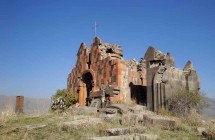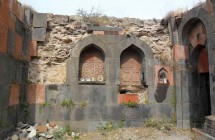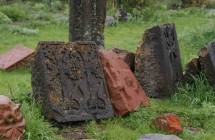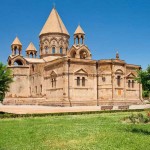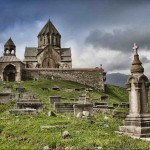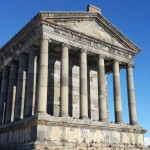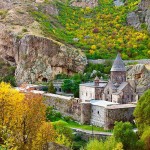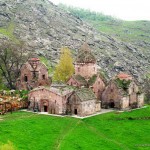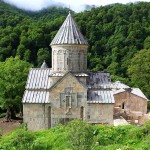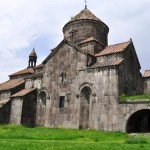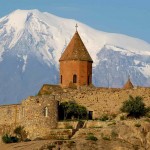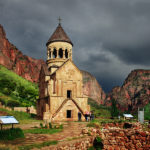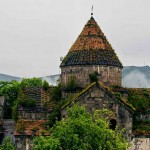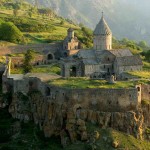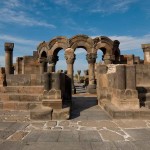
Havuts Tar monastery
Comment are off
Havuts Tar Monastery is situated a few kilometers from the temple of Garni, and can actually be seen from the temple. Havuts Tar Monastery, 11-13th c., is an impressive walled monastery, half ruined, on a promontory across the Garni river gorge from Goght. It can be reached in a bit less than an hour on foot, either from Goght or from the dirt road at the bottom of the gorge, accessible by car from Garni. From Goght, follow the dirt track from the far end of the main paved square, past the ruined basilica church, then bear left on the asphalt road to the end. Go through a green metal gate into a farmyard (friendly folk), then bear right past the barn down cement steps to a clear, steep footpath down into the gorge, across a wooden bridge, then up to farmlands. In the far right corner of the fields, the path continues steeply up, about fifty yards to the left side of a little gully and vertical rock spine. Most of the way up, a clear path goes right following the contour line. First you reach a cluster of small shrines/tombs, then the monastery, and beyond it the Amenaprkich church on the western outcrop. Amenaprkich was built in 1013 by the young Grigor Pahlavuni (ca. 990-1058), son of the lord of Bjni and nephew of the sparapet Vahram Pahlavuni, a fascinating character who went down in history as Grigor Magistros from the Byzantine imperial titles he received after the Armenia kingdom of Gagik II Bagratid (Bagratid passed into Byzantine hands in 1045. Having given his own lands to the Emperor, Grigor Magistros received estates in Mesopotamia and was ultimately appointed governor of large tracts of historical Armenia. He was also a major scholar of the period, author of a grammatical treatise, a 1000-line (each rhyming on “?in”) verse rendition of Holy Scripture, and a book of letters in an erudite but untranslatable style. The bulk of the monastic complex is 12-14th c., rebuilt in the early 18th c. by the Catholicos Astvatsatur after being ruined in the great 1679 earthquake. The walled enclosure preserves a rich trove of inscriptions and carvings from earlier times, as well as vaulted guest rooms.

